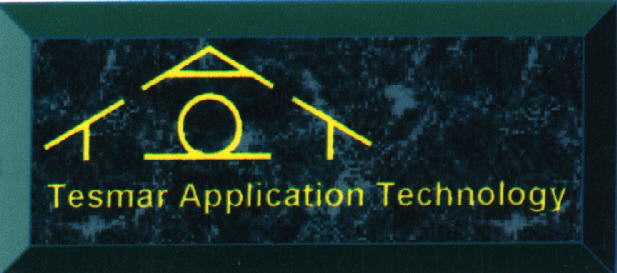“Deus ex machina” The god from a machine
In ancient Greek and Roman plays the hero would sometimes be placed into an impossible situation where he was surrounded by thousands of bad guys with spears and arrows and no means of escape. When all was about lost, suddenly a crane would move from behind the set and lower the hand of god to whisk the hero away to safety. This clever ploy was referred to then as “deus ex machina”, translating to “the god from the machine”. Today, this term is interpreted as being a contrived solution to an apparently insoluble difficulty. Sometimes I think that many of these early playwrights have been re-incarnated into radiant panel heating designers.
Like the ancient playwrights a lot of radiant panel heating designers tend to box themselves into a corner by a design process that they do not understand. They feed raw data into a computer program with little regard to the meaning of the input, until the program spits out a design summary. At this point the summary becomes the plan, regardless of how accurate the input data is or how far askew the summary leads them. Armed with a list of components and some obscure performance data they draw lines on a plan to indicate where the tubing should be placed and ship out the bid. Somewhere along the line they begin to face the apparently insoluble difficulty. Since the heating loads and floor coverings vary dramatically among the rooms, they notice that every room requires a different supply water temperature and flow rate. They begin to get a little nervous over not really knowing if the R-values of some of the floor coverings were accurate, and wonder how the system will work if they guessed incorrectly. Then they think about the hardwood floor. How will it work if the customer places a thick Persian rug over 70 percent of the dining room? If they’re really sharp they’ll start thinking about window heat loss, and how just a small error in the R-value can make a big difference. They begin to feel like the bad guys are sharpening their spears and arrows as they amass around them.
At this point they remember the “god from a machine”. They look for a control that they can plug into the system that will sort out all of the problems. It must be a smart “god-like” machine with lights that blink and concepts that mere mortals will never understand. Then they buy into some sophisticated control system that increases the price to a level that carves away at their margin. Sometimes the system works, and other times the customers must learn to live with the “quirks” that are all too common to some radiant systems.
I don’t buy into the god from the machine idea. I wouldn’t have applauded then, and I won’t now. I really feel that the best results come when the designer understands the design process, and influences the project in a way that limits the amount of control that is necessary. Then, he can use simpler and more practical devices to achieve much better results. In doing so, the customer gets a better product and the designer earns his money.
The thermodynamic principles of a radiant panel heating system are straightforward and can be easily understood. For example, we can expect to get about 2 Btu/hr for every degree difference in a floor surface temperature and the room temperature. If we need to meet a heating load of 20 Btu per hour at a set point of 70 Fahrenheit, then we will need to provide a floor temperature of 80. For ceilings we get about 1.8 Btu/hr for every degree that the ceiling surface is above the room temperature. There are some variations in the actual output, but these are very good approximations of performance.
All performance calculations rely on an accurate heat loss analysis, but heat loss analysis is seen by many designers as more of a nuisance than a tool. They are often willing to take shortcuts and make estimations in a way that suggests they believe the old adage that “ the more mistakes you put into an equation the more correct the answer will be”. I believe in garbage in garbage out. I believe it is important to determine the composite R-value of a window or door assembly by reference to the manufacturers test data, rather than pick a value from a scroll down help file. Heat loss through windows and doors is extremely critical in modern buildings because they typically have many windows and doors. Also, the lower an R-value of a component, the more critical it will be to the calculation. Another critical heat loss calculation is the estimate of air changes. Normal estimates of infiltration at ½ air change per hour is fine for modern well built homes, but air changes in older homes, or those with poor windows, must be adjusted upward. Where air to air heat exchangers are used, it is best to rely upon the performance data published by their manufacturers for the operating conditions. These are critical factors because in many projects, heat loss due to windows and air exchange comprise up to 80% of the heating load.
An accurate heat loss analysis will identify areas that do not need any heat as well as areas that need special attention. It is a tool that should be used by the designer to recommend changes, where necessary, in order to make the project more radiant panel friendly.
Heat loss is also the first step in calculating the required supply water temperature. Supply water temperature is determined from the required surface temperature and the resistance value of the panel. Multiply the heating load by the resistance upward and add it to the required surface temperature to obtain the average supply water temperature. Once again, the R-value is critical. For every unit of R-value, the supply water temperature increases by an amount equal to the heating load. I believe the designer should spend the time to both research the products and to recommend those that transfer heat effectively. Where necessary recommend high density thin carpet pads that perform better than thick pads in terms of heat transfer, as well as walkability and durability. Recommend laminate wood floors instead of solid wood floors when needed to reduce the resistance upward. The thinner laminate floors transfer heat better and are more dimensionally stable because they are not subject to the dimensional changes that solid wood experiences with changes in moisture content.
Use radiant ceilings where practical, either by themselves or to supplement radiant floors in areas where the floor cannot meet the entire heating load. Since radiant ceilings typically are constructed of low resistance materials, they operate at much lower supply water temperatures than radiant floors. Judicial use of radiant ceilings throughout the building can lower the maximum supply water temperature necessary to meet the load. In doing so the maximum difference in supply water temperatures between rooms in the building can be reduced, and the control problems simplified to a single supply water temperature. Supply water temperature is a critical control function.
In a way, controlling a radiant panel heating system is really compensating for the sum of it’s errors in design. In a good project, the designer must work to keep the errors minimal. A strong understanding of heat loss will demonstrate quickly that, for most buildings, each room behaves differently from others. Differences in window area, solar orientation, window treatments, occupancy levels, and various sources of internal heat such as cooking and bathing all contribute to the differences in heat load. More importantly, these variations are not constant. A solar gain will convert to a significant heat loss when the sun goes down if the draperies are not drawn. Occupancy levels and heat producing activities change by the minute.
In order to be effective and efficient, the control must recognize the variations in heating load and respond to them appropriately. The simplest of such systems is one which uses individual room thermostats to regulate the energy input to each room when it is needed, and where it is needed. In order for the individual zone control thermostat to be effective, however, it must have adequate authority over the supply of energy. If, for example, the supply water temperature is way too high for the heating load, a portion of the control authority will be used up in tempering the water, leading to erratic behavior. If the supply water temperature is low, either the heating load cannot be met or the acceleration will be very slow, also resulting in erratic behavior.
There are conflicting schools of thought on the issue of supply water temperature. Proponents of resetting the supply water temperature argue that doing so provides a more even floor temperature and reduces fluctuations that result from overshooting the heat load. Proponents of a constant supply water temperature, such as myself, argue that the floor surface temperature should be warmer at the outside walls and graduate inwardly to a lower surface temperature because, conceivably 80 percent of the heating load exists within 2 feet of the outside wall. An even floor temperature would compromise comfort and efficiency by over heating the interior space at the expense of comfort on the outside wall. Also, in a high mass concrete radiant floor, the acceleration load is at least 4 times the steady state load. You need to put 42+ Btu into a square foot of slab in order to meet a 10 Btu per square foot load in one hour. Once you get there, you can coast along at 10 Btu per square foot. If you use a typical reset curve, it can take up to 6 hours to get the slab up to temperature. I don’t consider that acceptable. Instead, a level supply water temperature at the maximum design will accelerate the slab at an acceptable speed and maintain at design temperature. During coast down, the concrete slab will not overshoot as it bleeds off the stored Btu’s unless there is an extraordinary internal heat gain or, for some reason, you choose not to use an accurate room thermostat to recognize the fact that there is no longer a need for heat.
My advice to anyone wanting to make a profit in the radiant panel heating business is to “do the math”. Use the numbers to become more knowledgeable and to make better decisions. Better decisions will reduce cost and improve performance. Better decisions will keep you out of situations where you are looking for the “deus ex machina”.

